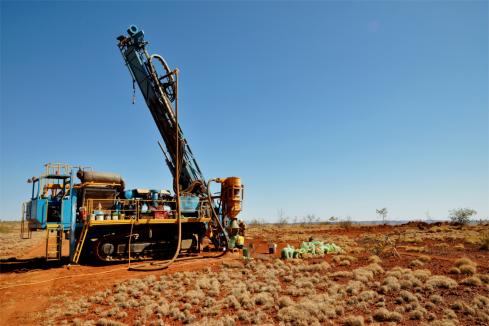Terrain Minerals is preparing to stare directly into what it says is a Nova-style “eye” magnetic feature at its Lort River project in Western Australia, with a detailed airborne electromagnetic (AEM) survey.
The company identified the intriguing feature just eight weeks ago while searching through old geophysical records and is wasting no time in refining the target, which displays stark similarities to IGO’s renowned Nova-Bollinger nickel-copper deposit in WA’s prospective Albany-Fraser belt.
Adding more intrigue to the area is a single line of AEM data running along the southern edge of the aeromagnetic captured by the Australian Government’s geological arm – Geoscience Australia – in its efforts to acquire AEM across the continent. Flown over a 20km length, the survey highlighted a shallow EM conductor thought to outline buried metalliferous sulphide mineralisation.
Sirius Resources targeted a similarly-described eye structure back in 2012 at a little-known project called Nova and some eight months later, went on to test another anomaly known as Bollinger. In a matter of months, Sirius’ share price catapulted from 5c to $5 before it was taken over by IGO.
The “eye” feature turned out to be the geophysical signature of the ultramafic intrusion hosting the cluster of nickel-copper ore bodies. The combined indicated and inferred resource for the two better-known deposits is a massive 14.3 million tonnes at 2.3 per cent nickel, 0.9 per cent copper and 0.08 per cent cobalt.
At the time, Sirius repeatedly expressed a view that electromagnetics continued to be a reliable exploration tool during its exploration and development of the Nova-Bollinger nickel-copper deposit.
Sharing a similar view, Terrain has awarded the contract to pioneering global geophysical provider UTS Geophysical to fly the detailed survey. Kicking off in early May, the survey is expected to take about three weeks, with an additional three weeks allocated to interpret and model the new data set.
Killing two birds with one stone, the company says the AEM survey has also been designed to map zones of potential clay-hosted rare earths across the tenement. It is a technique that has found favour with nearby rare earths explorer OD6 Metals, which lit up a swathe of highly-prospective clay zones throughout its flagship Splinter Rock tenure.
Extensive subsequent drilling of the targets has turned up a broad parcel of clay-hosted mineralisation, with grades of up to 6726 parts per million total rare earth oxides (TREO). OD6’s persistence in the area was rewarded with a maiden resource of 344 million tonnes at 1308ppm TREO in July last year.
Lort River sits just 50km north of Esperance in the southern regions of the Albany-Fraser orogenic belt – home to an expanding list of precious and critical metals including the 5 million-ounce Tropicana Gold project that is owned by AngloGold Ashanti’s joint venture (JV) with Regis Resources and IGO’s zinc-copper volcanic-hosted massive sulphide (VMS) discovery at Andromeda.
Following the recent granting of an additional exploration licence adjoining Terrain’s existing tenure, the company has its foot on a 640-square-kilometre patch of the lucrative belt. With a mixed bag of tier-one deposits sharing the neighbourhood, Terrain will be eager to see if its latest AEM survey can peer deep into the eye of its own discovery.
Is your ASX-listed company doing something interesting? Contact: matt.birney@businessnews.com.au















